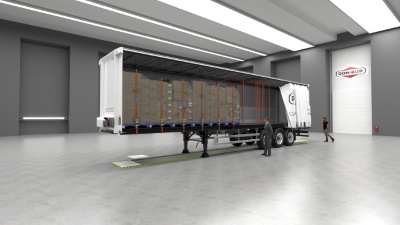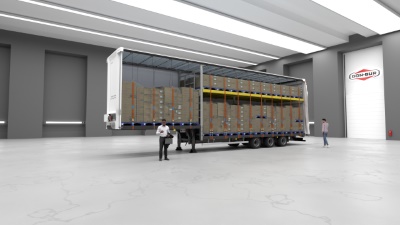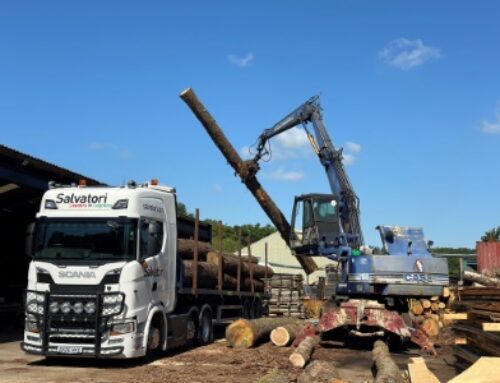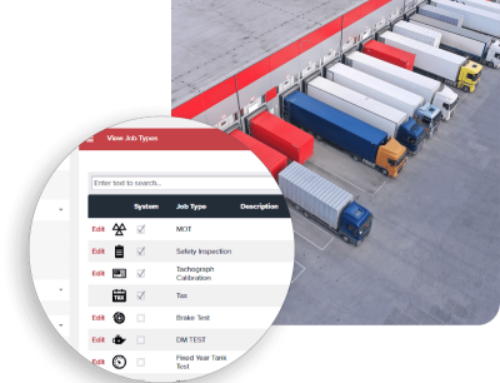Double-deck trailers are ‘low-hanging carbon win’
An industry expert has highlighted the potential for double-deck trailers to assist fleet operators in meeting their carbon emissions reduction goals.
Ahead of widespread fleet electrification, there is a proven way to cut emissions intensity now, says Richard Owens, technical support specialist and marketing manager at trailer maker Don-Bur – move more pallets per tractor-kilometre.
“Double deck trailers achieve this by doubling volumetric capacity, reducing trip frequency, and lowering fuel use
per pallet – yet remain largely invisible in official carbon frameworks,” said Richard.
“The principle is simple: a standard articulated single-deck carries around 26 UK pallets (1.0 m × 1.2 m footprint), while a double-deck of the same length carries up to 52. That 100 per cent increase in load footprint means that for volume-limited goods, operators can halve the number of trunking trips required.
“On Euro pallets (1.2 m × 0.8 m footprint), absolute pallet counts increase, but the proportional benefit from double-decking remains the same.
“What is striking is that, despite being one of the simplest ways to reduce tractor movements, double-decks have attracted little policy focus.”
While it’s true that double-decks consume slightly more fuel per kilometre due to increased tare and frontal area, says Richard, this is more than offset by the trip reduction.
“ The critical measure is not litres per kilometre but litres per pallet-kilometre or litres per tonne-kilometre. In cube-limited operations, the intensity drops sharply because one tractor move does the work of two.
“Historic Department for Transport guidance has echoed this point: more usable cubic space means fewer tractor moves, lower mileage and reduced emissions. The percentage saving varies with load profiles and network design, but the logic holds wherever operations are volume-constrained.”
The efficiency of a double-deck trailer is not determined solely by whether it has two decks, explains Richard; structural design around the tractor interface and internal apertures plays a major role.
“In the UK, the fifth wheel height is generally fixed at 1.25 m. This imposes a constraint on double-deck builds limited within a 4.95 m overall height. The geometry over the swan-neck dictates how much vertical clearance is available for payload in this forward section of the trailer.
“On a standard step-frame double-deck, the rear three-quarters of the trailer can normally take full-height loads on both decks. Over the swan-neck, however, the available aperture is restricted.
“This often leads operators to specify a three-quarter length upper deck, positioned to the rear, while keeping the front section single-decked (typically for eight pallets). In such designs, an aerodynamic front roof profile (EcoStream) is usually added to reduce drag and fuel consumption.”
An alternative option is a full-length upper deck platform, says Richard, which maximises pallet count but with a caveat – at least one deck aperture above the swan-neck will be lower than the rest, limiting load flexibility in that zone.
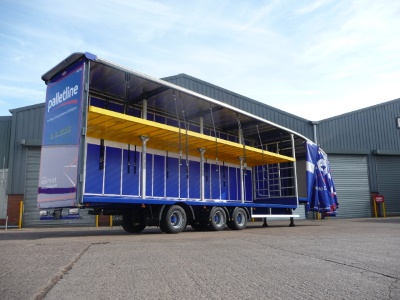 A further possibility for operators is to specify a low fifth wheel height, which increases the available aperture over the swan-neck and improves loading options, albeit with compatibility considerations for tractors.
A further possibility for operators is to specify a low fifth wheel height, which increases the available aperture over the swan-neck and improves loading options, albeit with compatibility considerations for tractors.
“These structural trade-offs are central to double-deck performance,” said Richard.
“Getting the balance right between deck length, swan-neck aperture and aerodynamic profiling ensures that the theoretical cube gain translates into practical, usable capacity in day-to-day operations.”
Simply procuring double-deck trailers does not guarantee savings, he adds; success depends on disciplined operations and network design.
“They deliver the strongest returns on volume-limited trunking routes, especially in retail, parcel and FMCG sectors. Matching deck heights to the load profile ensures every cubic metre is used effectively. Stable, predictable lanes are also vital – the cost saving materialises only if planners actively reconfigure schedules to remove redundant trips.
“Infrastructure compatibility must be checked. Dock heights, loading bays and site MHE all need to suit taller vehicles. Fixed decks may require tail lifts or specialist site kit.
“Finally, operational discipline is essential. Drivers must be trained in height awareness and approved routes must be strictly followed to avoid bridge-strike risks.”
Richard explains that Great Britain imposes no statutory maximum trailer height, unlike most of Europe where limits sit around 4.0–4.2 m.
“On the UK strategic road network, the de facto standard clearance is 16′6″ (5.03 m) or higher. Bridges at this height or above are generally unmarked; any bridge lower than 16′6″ should carry a restriction sign.
“For this reason, Don-Bur typically designs double-decks for an overall height of 4.95 m (16′3″), ensuring safe clearance beneath unmarked national highways structures while preserving maximum cubic capacity.
“On defined trunking routes with mapped clearances, taller builds are technically feasible but these remain specialist, route-specific solutions. For general fleet deployment, 4.95 m offers the most pragmatic balance of capacity and network access.”
Despite the obvious savings, double-decks remain largely absent from formal carbon-reduction frameworks, says Richard.
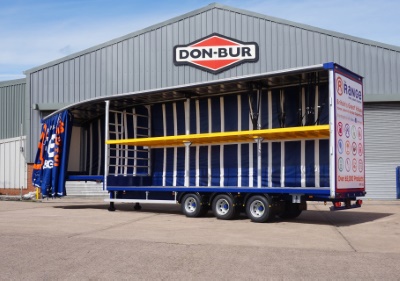 “The Department for Transport has invested heavily in longer semi-trailer (LST) trials but has not given double-decks the same profile, even though their efficiency gain is greater in cube-limited operations.
“The Department for Transport has invested heavily in longer semi-trailer (LST) trials but has not given double-decks the same profile, even though their efficiency gain is greater in cube-limited operations.
“The omission is also evident at European level. The Commission’s VECTO tool – used to calculate CO₂ performance of heavy vehicles – does not include double-deck trailers as a recognised configuration. As a result, their contribution is invisible in official carbon accounting, despite their proven real-world impact across the UK fleet.”
He concluded: “For policymakers aiming to decarbonise freight, this is low-hanging fruit. That such a readily available technology sits outside VECTO, and is scarcely mentioned in national strategies, remains an odd omission given the urgency of the carbon challenge.”


